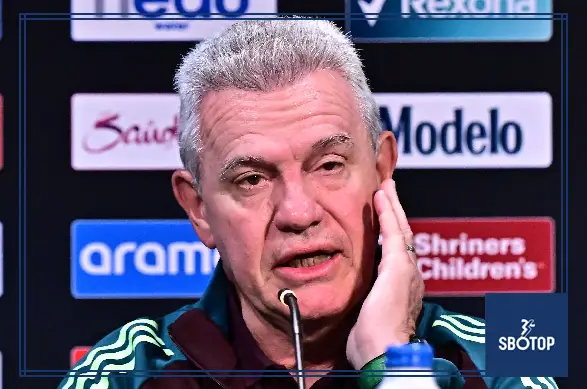In the high-stakes world of international football, the ability to convert chances into goals often separates success from failure. For Mexico’s national team, affectionately known as El Tri, this has become a glaring issue that has drawn the ire of head coach Javier Aguirre. Known for his fiery passion and tactical acumen, Aguirre has not minced words in expressing his frustration over the team’s lack of clinical finishing.
During a recent press conference, Aguirre’s candor highlighted a problem that has plagued Mexico in crucial matches: the inability of their strikers to capitalize on goal-scoring opportunities. “It bothers me, it irritates me,” Aguirre admitted. “We create chances, we dominate possession, but we fail to put the ball in the net. That’s unacceptable at this level.”
As Mexico prepares for upcoming challenges, including World Cup qualifiers and regional tournaments, the spotlight is firmly on their forward line. This article explores the root causes of this issue, its impact on the team, and potential solutions that could help El Tri reclaim their edge in front of goal.
The Current Striking Dilemma
Mexico’s recent performances have been marked by a troubling trend: dominating games without converting dominance into victories. Despite controlling possession and creating a plethora of chances, the team has often struggled to finish off their opponents. The statistics paint a sobering picture:
- In their last five matches, Mexico has averaged 15 shots per game but has managed to score only four goals.
- Key forwards such as Raul Jimenez, Henry Martin, and Santiago Gimenez have underperformed, with a combined goal tally that falls well below expectations.
- Missed opportunities in critical matches, such as their Gold Cup semi-final loss, have highlighted the team’s profligacy.
Aguirre’s Tactical Approach
Under Aguirre’s stewardship, Mexico has adopted a dynamic and attacking style of play. The team emphasizes quick transitions, overlapping full-backs, and creative midfield play. However, the lack of a reliable finisher has often undermined these efforts.
- Midfield Creativity: With players like Edson Alvarez, Hector Herrera, and Luis Chavez pulling the strings, Mexico rarely lacks in creativity. The midfield’s ability to carve open defenses is among the best in CONCACAF.
- Flank Play: Wingers such as Hirving Lozano and Alexis Vega provide pace and width, delivering crosses and creating space for the strikers.
- Final Touch: Despite these strengths, the final touch has been missing. Poor decision-making and a lack of composure in front of goal have been recurring issues.
Player-Specific Analysis
- Raul Jimenez:
- Once Mexico’s talisman, Jimenez has struggled to regain his pre-injury form. While his hold-up play and aerial ability remain strong, his finishing has been inconsistent.
- Henry Martin:
- Known for his work ethic, Martin has often been criticized for his lack of killer instinct. He tends to falter under pressure, especially in high-stakes situations.
- Santiago Gimenez:
- The young forward has shown flashes of brilliance but lacks the experience and consistency needed at the international level.
Psychological Factors
Aguirre has suggested that the problem may not solely lie in technique but also in mentality. “Confidence is everything for a striker,” he noted. “When you’re in a slump, it feels like the goal gets smaller.”
- Pressure to Perform: The weight of expectations from fans and media can be overwhelming for Mexican players, particularly strikers.
- Missed Opportunities: A few missed chances can snowball into a crisis of confidence, affecting decision-making and composure.
- Competition for Spots: While competition is healthy, the lack of a clear first-choice striker has led to inconsistency and uncertainty.
Impact on Team Performance
The inability to finish chances has far-reaching consequences for El Tri:
- Lost Momentum: Missed opportunities allow opponents to regroup and grow into matches.
- Increased Pressure on Defense: Failing to capitalize on scoring chances often puts undue pressure on the defense to maintain slim leads.
- Diminished Confidence: The team’s overall morale takes a hit when hard work goes unrewarded.
Comparisons with Rivals
Mexico’s rivals in CONCACAF, such as the United States and Canada, have made significant strides in their attacking efficiency. Players like Christian Pulisic and Alphonso Davies have consistently delivered in key moments, providing a stark contrast to Mexico’s struggles.
Solutions and Path Forward
Aguirre and his coaching staff are leaving no stone unturned in addressing the issue. Here are some potential solutions:
- Focused Training:
- Intensive shooting drills to improve accuracy and composure.
- Simulating high-pressure scenarios to build mental resilience.
- Sports Psychology:
- Working with psychologists to help players overcome confidence issues.
- Emphasizing positive reinforcement and a growth mindset.
- Scouting New Talent:
- Identifying and nurturing young strikers who can bring fresh energy and perspective to the team.
- Providing more opportunities for emerging talents in domestic leagues.
- Tactical Adjustments:
- Experimenting with different formations to optimize the forward line.
- Encouraging midfielders and wingers to contribute more directly to goal-scoring efforts.
The Role of Fans and Media
Aguirre has also called on fans and media to play a constructive role. “Criticism is part of the game, but we need to support our players during tough times,” he said. “They need to feel the trust and belief of the nation.”
As Mexico prepares for upcoming fixtures, including crucial World Cup qualifiers, the pressure to address their striking woes will only intensify. However, Aguirre remains optimistic. “We have the talent,” he asserted. “It’s about finding the right balance and building confidence.”
Also Read:










